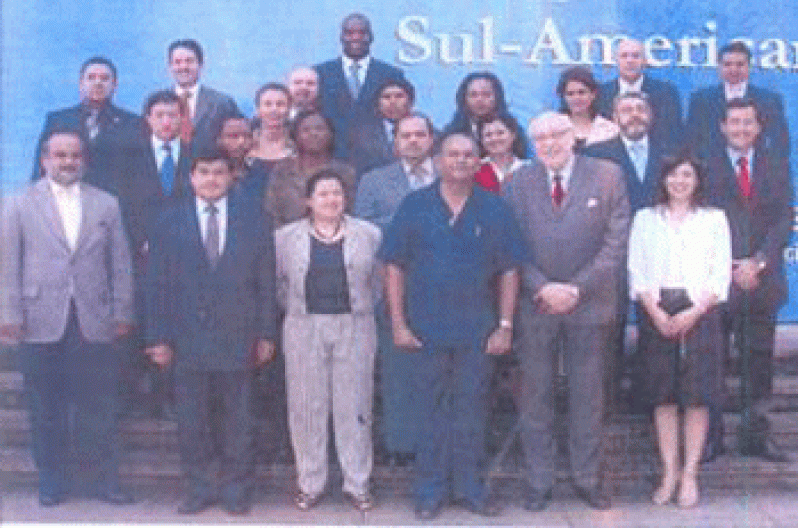Professor Tota Mangar delivers Arrival Day lecture series
Professor Tota Mangar, Dean, Education and Humanities, was involved in a number of public service activities as part of commemoration activities for the Indian Arrival observances during last year’s Arrival Day observances. Among these were the feature address at Unity/Lancaster Youth Group Commemoration of Indian Arrival Anniversary titled ‘Significance of East Indian Immigration, 1838-1971’, with the second lecture in the public lecture series organised by the local chapter of Global Organisation of Peoples of Indian Origin (GOPIO) on the topic ‘East Indian Immigration in Guyana, 1838-1917: Sacrifice and Resistance,’ held at National Library in Georgetown.
Mangar examines Indian indentured labourers struggle of sacrifice
INDIAN indentured labour was the subject when Professor Mangar concluded the two-part lecture series at the National Library.
Following welcoming remarks by the facilitator, UG Pro-Chancellor, Dr. Prem Misir, the lecturer went into an in-depth examination of the system of indentureship.
Noting that last year marked the 173rd anniversary of Indian Arrival, Mangar quoted statistics to show that significant numbers of indentured labourers were imported from the Indian sub-continent to the West Indian colonies, ostensibly to fill the void created by the mass exodus of ex-slaves from the plantations following the abolition of slavery and the premature termination of the apprenticeship scheme in 1838.
He said Guyana (the former British Guiana) was the recipient of 239,909 East Indian immigrants up to the termination of the system in 1917.
Additionally, he explained, the non-English speaking Caribbean also imported Indian indentured labourers. For example, of the French colonies (now overseas departments), Martinique received 25,509, Guadeloupe 45,844 and French Guiana 19,276. Suriname imported 35,501 immigrants while under Dutch rule.
said the struggle of the indentured immigrants began even on board the ship and could be characterised as one of sacrifice and resistance, compared to slavery, a controversial point that was the subject of great debate in the question and answer segment of the programme.
Mangar refuted the myth about Indian docility, citing instances where indentured labourers fought against the system.
He showed how the planters had many instruments of control for the Indians, as the labour laws allowed the former to impose heavy fines and prison sentences if a labourer failed to complete tasks or refused to work.
Professor Mangar contended that the system was arranged so that an indentured labourer could only be on the estate, in hospital or jail. Additionally, the labourers’ contracts could be extended for any period while he was in jail.
The first part of the lecture series, which focused on the arrival of Chinese indentured labourers to Guyana, was delivered the previous week at the Cheddi Jagan Research Institute, High Street, Kingston, in Georgetown.



.jpg)











